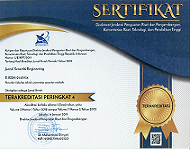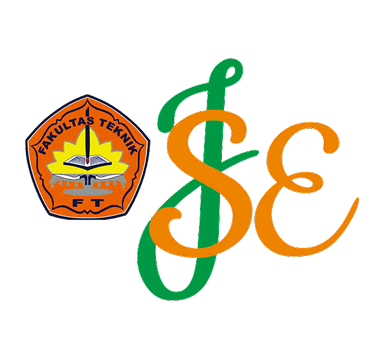Design of an Internet of Things-based Fall Detection System and Feedforward Neural Network with Edge Impulse
Keywords:
edge impulse, fall detection, internet of things, feedforward neural network, tinymlAbstract
The increasing elderly population in Indonesia presents a significant challenge in ensuring safety, particularly concerning the risk of falls, which can lead to serious injuries. This study aims to design and develop a fall detection device based on the Internet of Things and a Feedforward Neural Network algorithm. The system was built using an ESP32 microcontroller and ADXL345 accelerometer sensor, and integrated with firebase and nodered to enable real time fall notifications via whatsapp. The SisFall dataset was utilized, consisting of two primary classification labels fall and activities of daily living . Data processing and model training were carried out using the Edge Impulse platform. Three different models were evaluated, and Model 1 was selected as the best-performing model after hyperparameter tuning, achieving the highest accuracy of 99.7% and the lowest loss of 0.02. The model was quantized to int8 format for efficient edge deployment. Real world testing of the device involved 30 movement variations, each tested five times. Results showed that the system achieved a classification accuracy of 95.76%, precision of 97.22%, sensitivity of 93.33%, and specificity of 97.78%. These metrics indicate that the fall detection system was successfully developed and demonstrates excellent and reliable performance for practical applications.
References
[1] E. D. Noorratri, A. S. Mei Leni, and I. S. Kardi, “Deteksi Dini Resiko Jatuh Pada Lansia Di Posyandu Lansia Kentingan, Kecamatan Jebres, Surakarta,” GEMASSIKA J. Pengabdi. Kpd. Masy., vol. 4, no. 2, p. 128, 2020, doi: 10.30787/gemassika.v4i2.636.
[2] J. G. B. Talete, “Hubungan Dukungan Sosial Dengan Keaktifan Berorganisasi Pada Lansia di Jemaat Gmim Bait-Lahim Talete 1 Jofie Hilda Mandang Universitas Negeri Manado,” vol. 9, no. 19, pp. 989–997, 2025.
[3] S. R. B. A. Rudi, “Analisis Faktor Yang Mempengaruhi Risiko Jatuh Pada Lansia,” J. Ilm. Kesehat. Wawasan Kesehat., vol. Vol. 5, 2019.
[4] H. Lilyanti, E. Indrawati, and A. Wamaulana, “Resiko Jatuh pada Lansia di Dusun Blendung Klari,” Indogenius, vol. 1, no. 2, pp. 78–86, 2022, doi: 10.56359/igj.v1i2.67.
[5] M. A. Yuzefo, F. Sabrian, and R. Novayelinda, “Hubungan Status Spritual Dengan Kualitas Hidup Pada lansia Di Kelurahan Tuah Karya,” Jom, vol. 2, no. 2, pp. 1266–1274, 2016.
[6] L. A. Sholekah, E. Soesanto, and S. Aisah, “Hubungan Faktor Fisiologis Pada Lansia Dengan Resiko Jatuh Di Dusun Wangil Desa Sambonganyar Kabupaten Blora,” J. Keperawatan dan Kesehat. Masy. Cendekia Utama, vol. 11, no. 2, p. 174, 2022, doi: 10.31596/jcu.v11i2.1116.
[7] M. Firmansyah, “Rancang Bangun Sistem Fall Detection Untuk Orang Lanjut Usia Berbasis Inertial Measurement Unit,” TEKTRIKA - J. Penelit. dan Pengemb. Telekomun. Kendali, Komputer, Elektr. dan Elektron., vol. 1, no. 2, pp. 133–137, 2019, doi: 10.25124/tektrika.v1i2.1745.
[8] A. Darmawan and R. F. Hasani, “Rancang Bangun Sistem Monitoring Posisi dan Kondisi Jatuh Manusia Lanjut Usia (Manula) Berbasis Internet of Things (IoT),” Spektral, vol. 1, no. 1, pp. 10–16, 2020, doi: 10.32722/spektral.v1i1.3436.
[9] A. Najmurrokhman, Kusnandar, U. Komarudin, and A. Wibisono, “Development of Falling Notification System for Elderly Using MPU6050 Sensor and Short Message Service,” Proc. 2nd Int. Semin. Sci. Appl. Technol. (ISSAT 2021), vol. 207, no. Issat, pp. 345–351, 2021, doi: 10.2991/aer.k.211106.055.
[10] R. Das, “Accelerated Safety: Revitalizing ADXL345 for Enhanced IoT-enabled Fall Detection,” Int. J. Res. Appl. Sci. Eng. Technol., vol. 11, no. 12, pp. 1117–1120, 2023, doi: 10.22214/ijraset.2023.57503.
[11] A. Sucerquia, J. D. López, and J. F. Vargas-Bonilla, “SisFall: A fall and movement dataset,” Sensors (Switzerland), vol. 17, no. 1, 2017, doi: 10.3390/s17010198.
[12] S. Campanella, A. Alnasef, L. Falaschetti, A. Belli, P. Pierleoni, and L. Palma, “A Novel Embedded Deep Learning Wearable Sensor for Fall Detection,” IEEE Sens. J., vol. 24, no. 9, pp. 15219–15229, 2024, doi: 10.1109/JSEN.2024.3375603.
[13] E. Schröter, D. Thanh Nghi, and A. Schneider, “Development of an Intelligent Walking Aid for Fall Detection,” Curr. Dir. Biomed. Eng., vol. 9, no. 1, pp. 287–290, 2023, doi: 10.1515/cdbme-2023-1072.
[14] I. Wayan Wiprayoga Wisesa, G. Mahardika, J. Terusan Ryacudu, W. Huwi, K. Jati Agung, and L. Selatan, “IoT-based Architecture for Automatic Detection of Fall Incident using Accelerometer Data,” Indones. J. Artif. Intell. Data Min., vol. 3, no. 2, pp. 78–85, 2020.
[15] S. Norhabibah, W. Andhyka, and D. Risqiwati, “Rancang Bangun Sistem Monitoring Deteksi Jatuh untuk Manula dengan Menggunakan Accelerometer,” JOINCS (Journal Informatics, Network, Comput. Sci., vol. 1, no. 1, p. 43, 2017, doi: 10.21070/joincs.v1i1.803.
Downloads
Published
Issue
Section
License
Copyright (c) 2025 Wahyu Kurniawan, Nike Dwi Grevika Drantantiyas, Ahmad Suaif (Author)

This work is licensed under a Creative Commons Attribution 4.0 International License.












